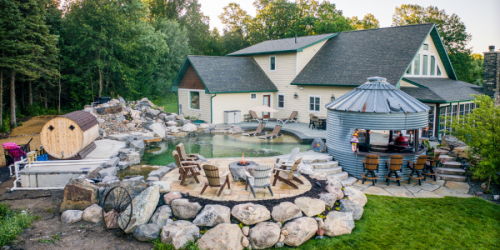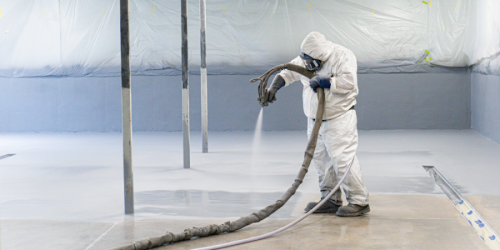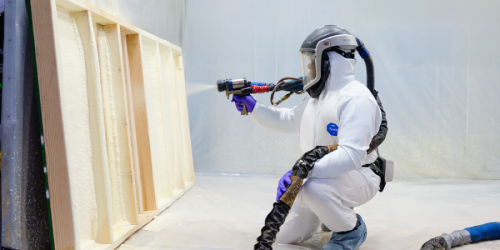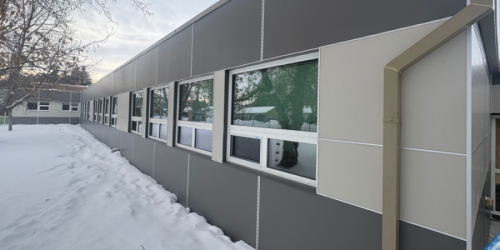Q&A Forums
am i missing something here? Post New Topic | Post Reply
| Author | Comments |
|---|---|
|
philip mullins
Posted: Jan 02, 2009 02:14 AM
|
am i missing something here?
havent posted here in a while, so i would like to start by saying that i hope you, and all who read this, had a safe and merry holiday season. myself, i ate like a pig, slept like a baby, and watched polar express with my 2 year old so many times that i could puke. good times!to the point, when giving bids lately i have heard that some of my local competitors (same 2 every time) are informing the prospective client that the spf they want to apply has a chemical mixed in it that will protect thier building from termites. so i have to ask, am i missing something here? is orkin in the foam buisness now?(why not, every one else is) and if it does, how does that stop them from eating thier way in through the siding? i inform my clients that bugs and rodents cant feel the warmth or smell the food on the other side to even wanna come in. and after showing them some samples, it is obvious how difficult it would be for a so inclined pest to achieve his goal with cc foam in his way. and past that i am not aware of any pesticides in my product. for what this stuff cost nowadays it aughta repell termites, and mother in laws, and a few other things as well! but i gotta be honest here, i realy wouldnt want some guy spraying pesticides in the walls of my home unless he had convinced me that he knew a lot more about it than your average foam applicator. and i gotta wonder if any one chose not to go with foam cause they werent comfortable with the idea either. personaly, i would like to tell my prospects that my competitors (if you wanna call 'em that) are either misinformed, or lying. most likely the latter. if i am missing something here, who will assume responsibility should the termites start eating away a house in a few years, or someone get sick? me or the manufacturer? and if these guys are full of it (im gonna go ahead and guess that they are), why would you purposely create what will be an unhappy customer? imagine if you were that customer, and then the foam is making the repairs that much harder, and more expensive! not the kind of 'word of mouth' this industry needs. i also have to inform the prospect that there is no chemicals added to kill mold or mildew. our product creats an air barrier which in turn stops moisture wich helps to prevent mold and mildew. pretty sure that im right on this one. and i usualy predict that these same 'professional installers' will be much cheaper than myself. i realy wanna tell the prospect who may be swayed by this sort of pitch just to throw an extra twenty in the pot on sunday and pray real hard. more likely to find a miracle in church. and think of the money youll save then! so what gives, do i have a REALY expensive terminx truck parked out back or what? |
|
mason
Posted: Jan 02, 2009 08:09 AM
|
Thanks for the comments Troutkiller. I am familiar with chemicals added to foam insulation that are supposed to help keep termites out of the foam. The first I heard of these chemicals was around 1995 when North Carolina was trying to ban EPS and XPS in below grade applications dur to termite infestation on EIFS applications. The Extruded Polystyrene Foam Manufacturers Association conducted tons of testing on different formulas. I believe boric acid was the most succesful chemical in their manufacturing and because of their testing and change in formula, North Carolina allowed their foams in below grade application if they contained an anti-termite chemical and/or had an inspection strip above the foam where termite inspections could be performed. I am also aware that at least one foam manufacture has conducted similar testing on various anti termite chemicals in their foam and are marketing it. I don't have first hand knowledge of the results of the testing and how effective the foam is. I can say that termites don't typically eat foam but can burrow through it fairly easily. So if you spray over rotting wood or in a heavily infested area of termites, they can burrow into the foam if it is their only access from one spot to the other. Most often, however, the termites will find a crevice around the foam to get into the building. Sprayfoam is more effective at stopping termite infestation of this type because it seals these cracks and crevices. Sprayfoam does not provide a good food for mold either but mold can grow on foam if the conditions are right, (temperature and humidity) Again, some manufacturers have conducted extensive testing on foam and its resistance to mold. Most tests show the foam with good mold resistance. Hope this helps. |
|
Posted: Jan 02, 2009 10:02 AM
|
Wikipedia list boric acid as not being much more toxic than table salt. So if it is used in a blend with foam to deter termites, that may be good. However, one concern.. Although it does not appear to be carcinogenic, studies in dogs have attributed testicular atrophy after exposure to 32 mg/kg bw/day for 90 days. Not quite sure what the atrophy is, but I would prefer it not to be in my testicula region. LOL Happy New Years! Steve |
|
Roger Morrison
Posted: Jan 03, 2009 07:06 AM
|
The building code restricts the use of foam plastics (all, not just SPF) in below grade uses in areas of "very heavy termite infestation potential" (there's a map showing these areas in the building code) unless (somehow) it's protected from termites or treated to be resistant to termite infestation. And everyone is correct, SPF is not a food source for termites. However, they will burrow through SPF to get to food or moisture. What makes this all the more problematic is that if termites have burrowed through SPF (particularly below grade applications), it makes it more difficult for exterminators to treat the infestation. Termite resistance testing of foam plastics is expensive and time consuming. I would suggest that you get a copy of the testing or other proof of termite resistance of your competitor's SPF(s) and attempt to make a determination as to its legitimacy. Boric acid is a good for termite (and ****** roach) resistance but I don't believe it is soluble in SPF components; therefore, there may be another material at play here. Roger |
|
mason
Posted: Jan 03, 2009 08:54 AM
|
Good information Roger, Check your local code for the rules regarding termite zones. The testing performed by the XPS manufacturers actually allowed the continued use of foam plastics below grade in the heavy termite infested areas(as described by the ICC codes). SPF is more resistant to termite damage than board insulation because it does not have the cracks and crevices the board insulation has but as Roger pointed out if the critters want to get from one side to the other they can burrow through the foam fairly easily. There have been studies performed in the 60s and 70s by Dupont, where 2 lb SPF was buried in a hot humid climate, after 10 years there was only slight termite damage. In other words they did not make their home in the foam. But in the tests, there was no food source on either side for the termites to be attracted. Remember in those areas, an inspection strip is required above the foam in below grade applications or the foam must be treated with anti termite chemicals. |
|
philip mullins
Posted: Jan 03, 2009 06:15 PM
|
guess i was missing something! tx guys |





























